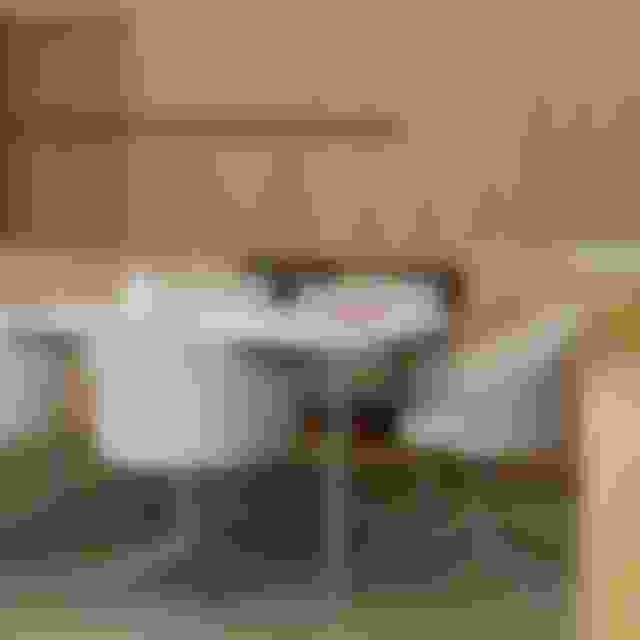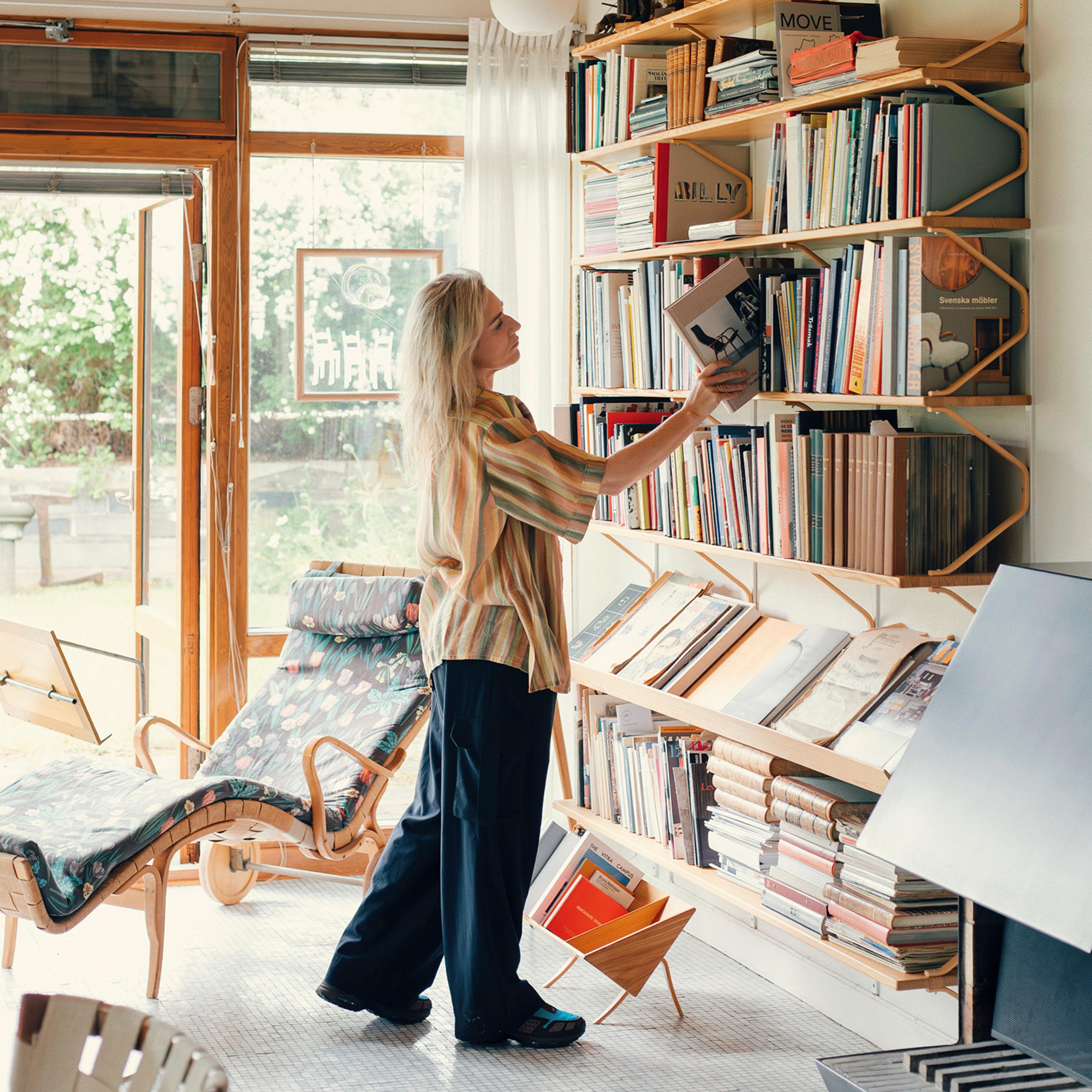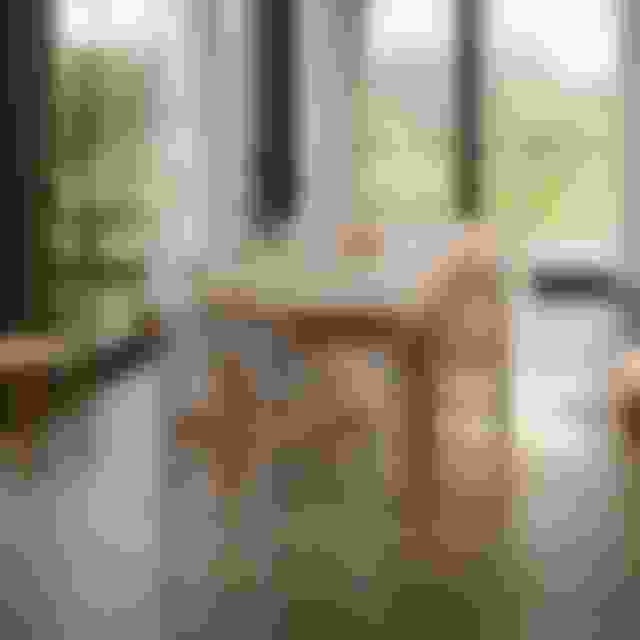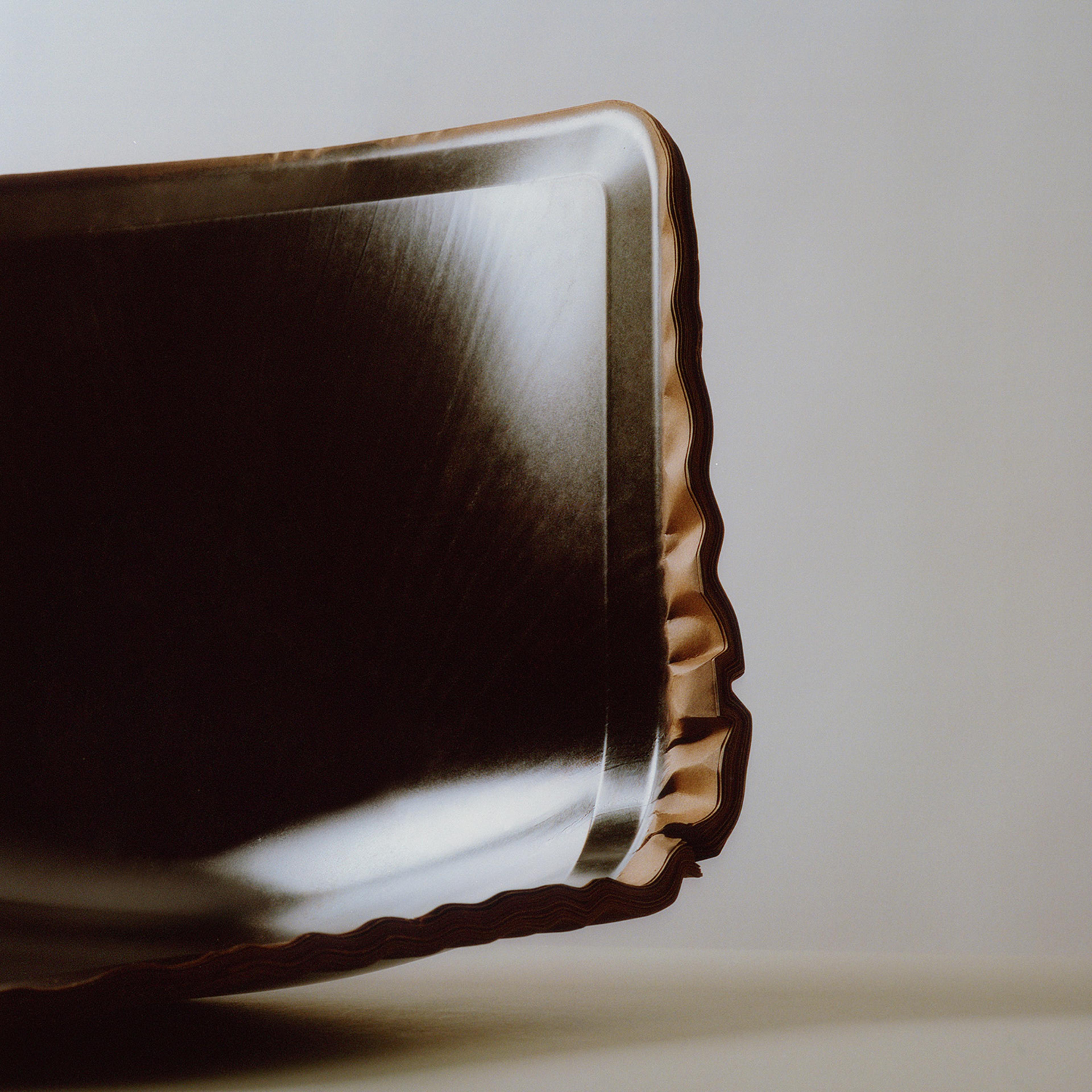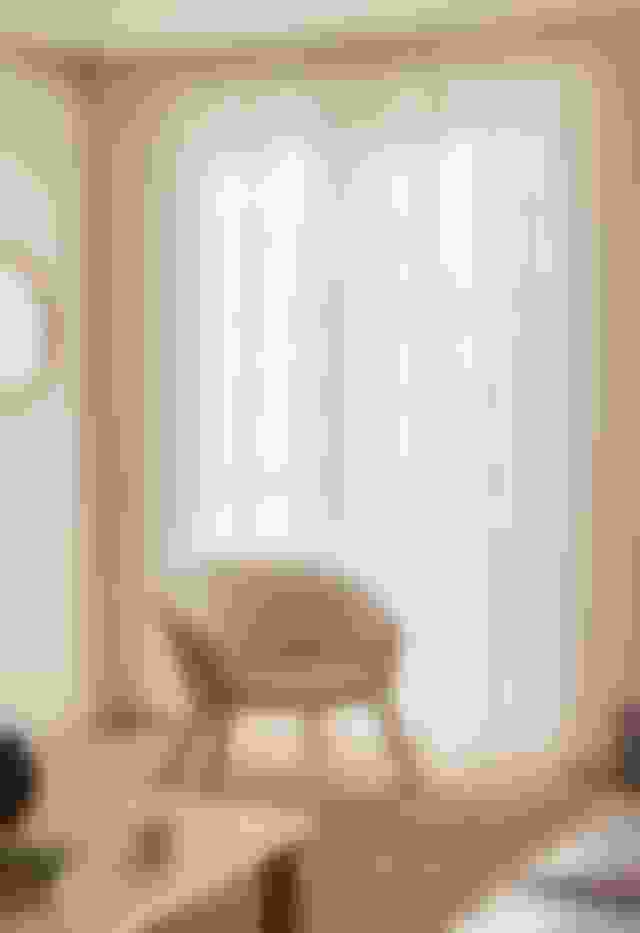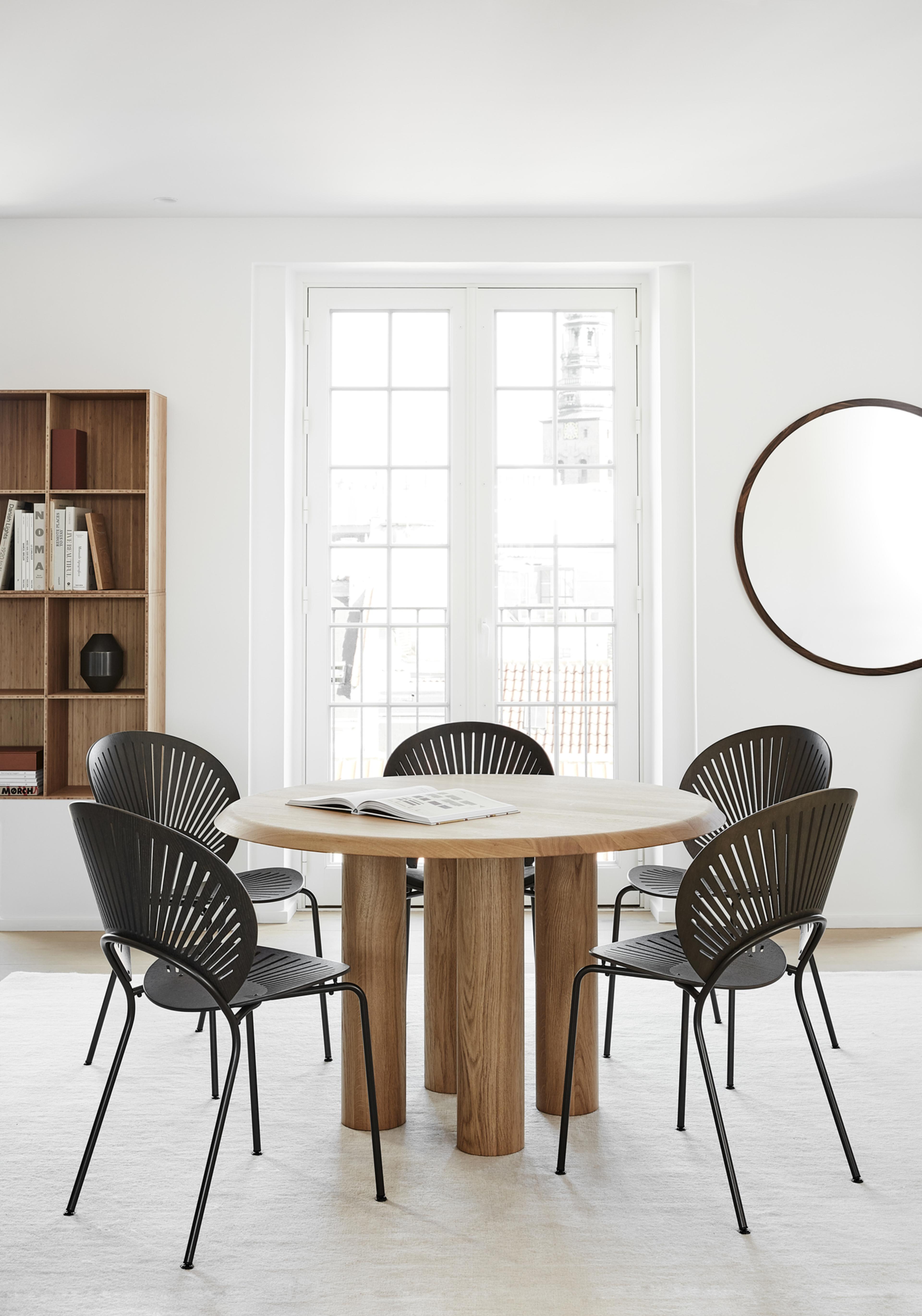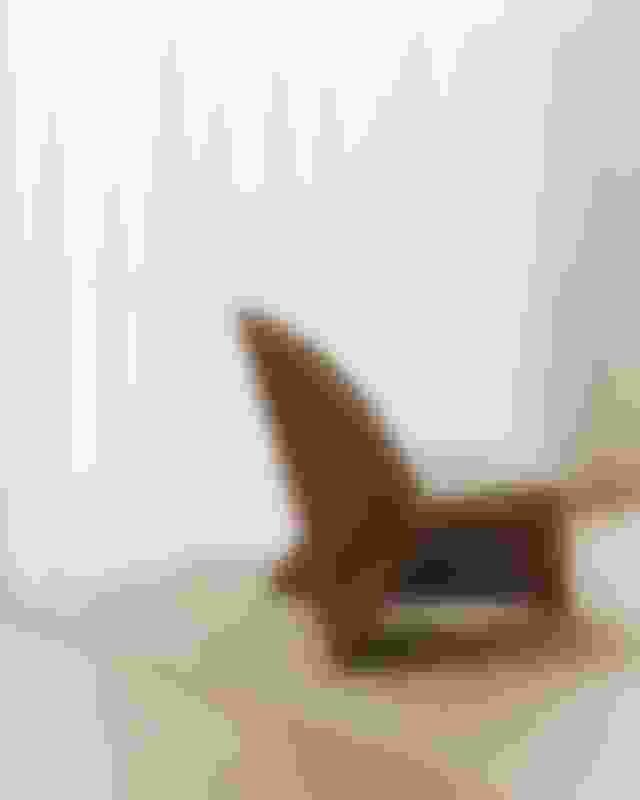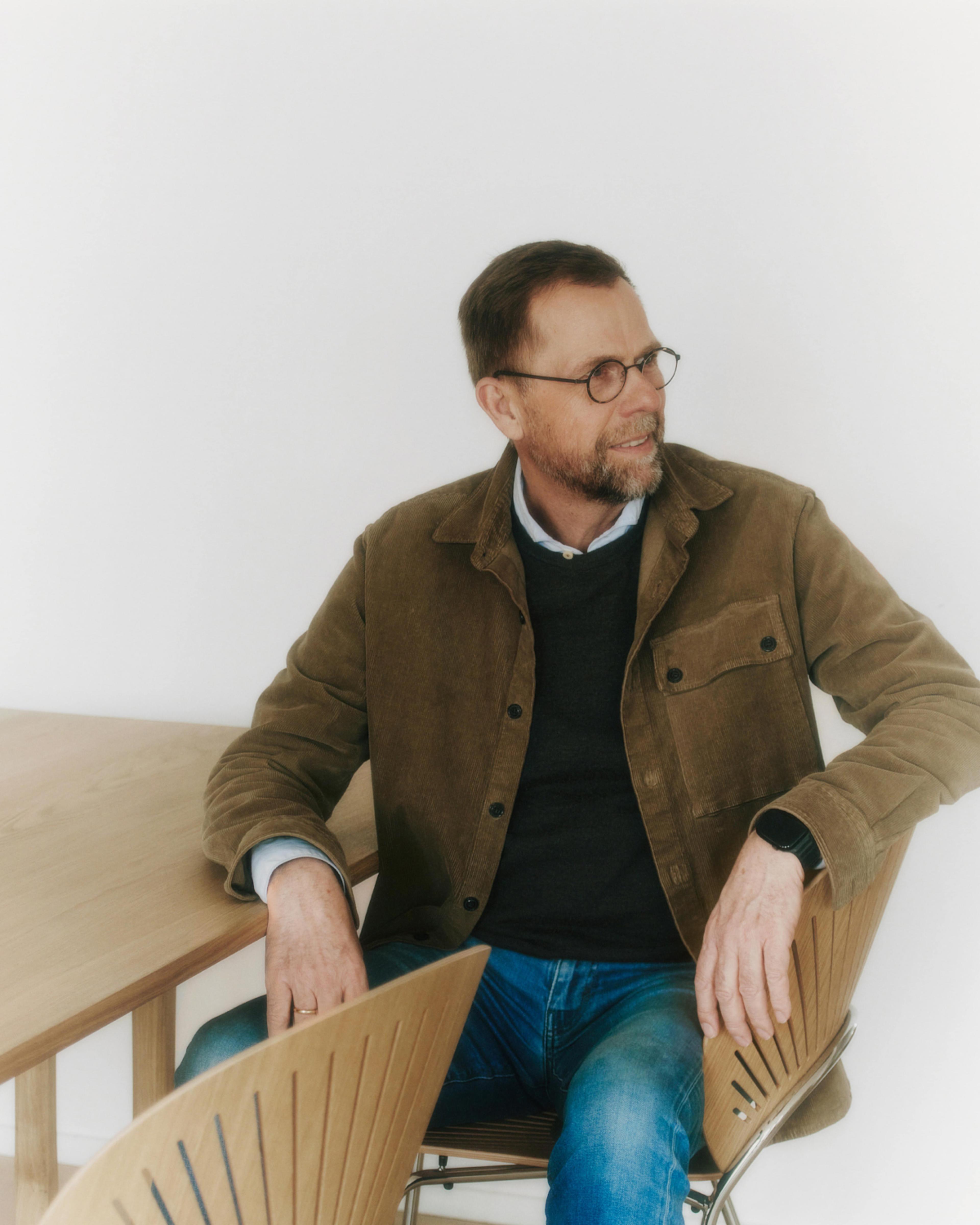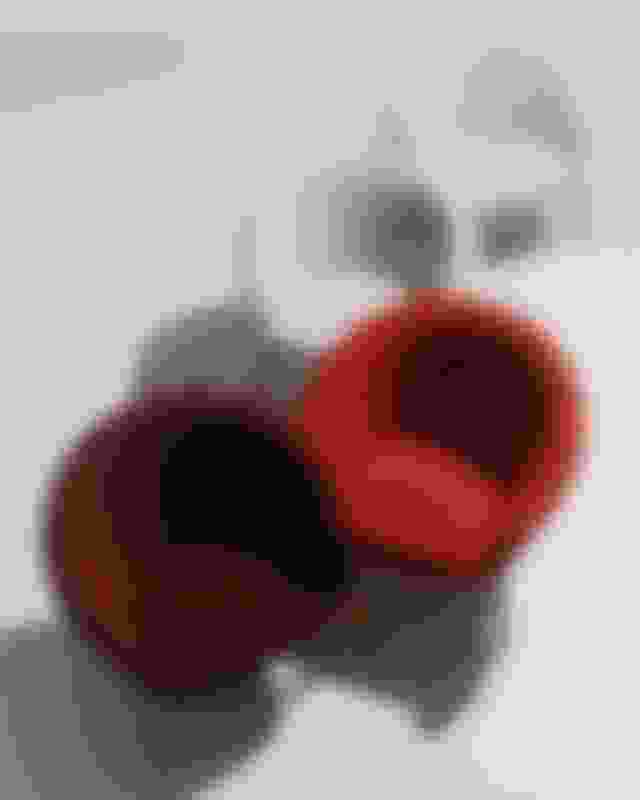Design should raise questions and stimulate curiosity
A conversation with Maria Bruun, Furniture designer.
Already recognised, Maria Bruun joins a long-standing Danish design tradition. With sincere respect for classic Danish furniture design, she builds on this foundation with an innovative approach and with an elegant design idiom resulting in works that straddle the line between artistic forms and functional designs, such as the Islets table collection for Fredericia, which reflects her sculptural minimalism. Bruun has been awarded Denmark’s prestigious Finn Juhl Prize and the Wegner Prize for her approach to design.
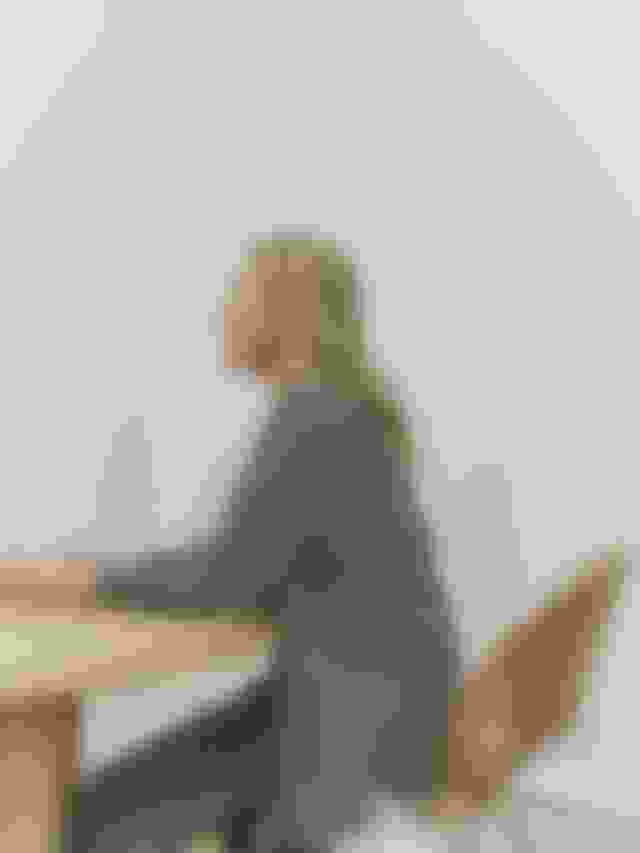

“ Her approach to the design process inspires me more than her actual products. For Nanna, everything was in her wheelhouse and a moldable artistic task, whether furniture, indoor spaces, textiles, everyday objects or jewellery. And her uncompromising approach to the subjective and the creative in her way of thinking is something I admire and take with me in my work. ”
Maria Bruun, Furniture designer
FREDERICIA What do you find unique about Ditzel’s design?
MARIA Nanna was unafraid of ornamentation, whether it was the design idiom itself, perforations or colour composition, which I find very interesting. Her inspiration from nature was very much evident in these ornamented touches, and at a time when many others were paring back, she was not shy about adding to her designs, almost as if she couldn’t “help herself”.
F How does Ditzel’s work inspire you as a furniture designer?
M Her approach to the design process inspires me more than her actual products. For Nanna, everything was in her wheelhouse and a moldable artistic task, whether furniture, indoor spaces, textiles, everyday objects or jewellery. And her uncompromising approach to the subjective and the creative in her way of thinking is something I admire and take with me in my work.
For me, creating is a very intuitive and subjective process. Most often, I design outside the brief for this very reason. There are no restrictions or constraints; the ideas, form and materials can flow freely and transform with the project as an iterative process, where each step informs the next.For example, when I’ve collaborated with Thomas and Rasmus Graversen, I often design outside the brief and in this way, a bold product is created – a concentrate – that is me. It is brave of the manufacturer – and not very typical of our times – to listen to the designer to such an extent. It does not solely consider the existing portfolio, the behaviour of competitors in the market or high volume. Instead, it focuses on the meaningful design that embodies the designer’s vision as translated into a commercial framework. We like to think that if good design matters to us, it also matters to consumers.
F You are described, much like Ditzel, as a designer who is not held back by dos and don’ts. Can you elaborate on that?
M My creative process is intuitive, but that’s not to say that I work entirely freely because once the uncompromising artistic idea has unfolded, the ambition is often to transform the artistic thought into a functional and usable piece of furniture; this is where the work begins with the machines and skilled craftspeople to optimise and explore.
One of the best steps in the process is here, where I need to listen to the skilled and experienced craftspeople, but also sometimes push back on techniques and notions like “this is how it’s done” or “we’ve always done it this way”. This is not an end in itself, but sometimes it may be necessary to push the conventional forms and production methods – to make some mistakes – to discover new techniques or potential, thus pushing back on what’s traditional.
F Ditzel rebelled against previous ways of looking at the design, and you yourself describe a shift in Danish design right now?
M Young designers today can relate to Nanna’s approach to the process and way of creating. There is a generation now for whom there is no right or wrong way to design. Designers are far more autonomous, and so are consumers, who recognise that design can be many things; it can be art, it can be architecture, it can be beautiful, and it can be ugly. There are many forms of expression today, and young designers are more concerned about whether it is meaningful and can elicit a response. There is much more of a tendency to stop during the process and say, “I’m done; I insist that my design makes sense to my surroundings”, whereas, in Nanna’s time, there was a more linear process when it came to what was “real design”. Today, the way we consume design is far more experimental, creating some exciting products and shifting the conventional wisdom of what design is.
F For Ditzel, it was necessary to move forward and question things constantly. What is important to you when designing?
M For me, it is essential to emphasise that good design matters and contributes more than purely functional use. Design is a profession that creates value and meaning for those who use it. I like to add something to my designs that raise a question or where those who use it might have their curiosity piqued or feel a minor irritation or annoyance. That’s where I feel I enter into a dialogue with the end user.
F What is your favourite object created by Nanna Ditzel?
M Her jewellery is gorgeous, and her Hallingdal textile has proven its worth over the years. In addition, the colour composition and her collaboration with DSB and the IC3 trains was a fantastic design accomplishment. But my favourite is the Trisse table from 1962. It is playful and sculptural with a simple design. Your hand can grip the pedestal and lift the table. It’s perfectly proportioned for the hand’s grip. It is a stackable “building block” with a completely undefinable spatial potential that can be scaled up or down. It can be one object but also 100 objects in a spatial sculpture, forming an entirely different use. For me, it is scaleless while staying incredibly one-to-one with the body, and that’s an exciting twist.
Keep exploring
Dive into our universe of stories about Nanna Ditzel's life, her designs and the people who knew her.
1 of 4
